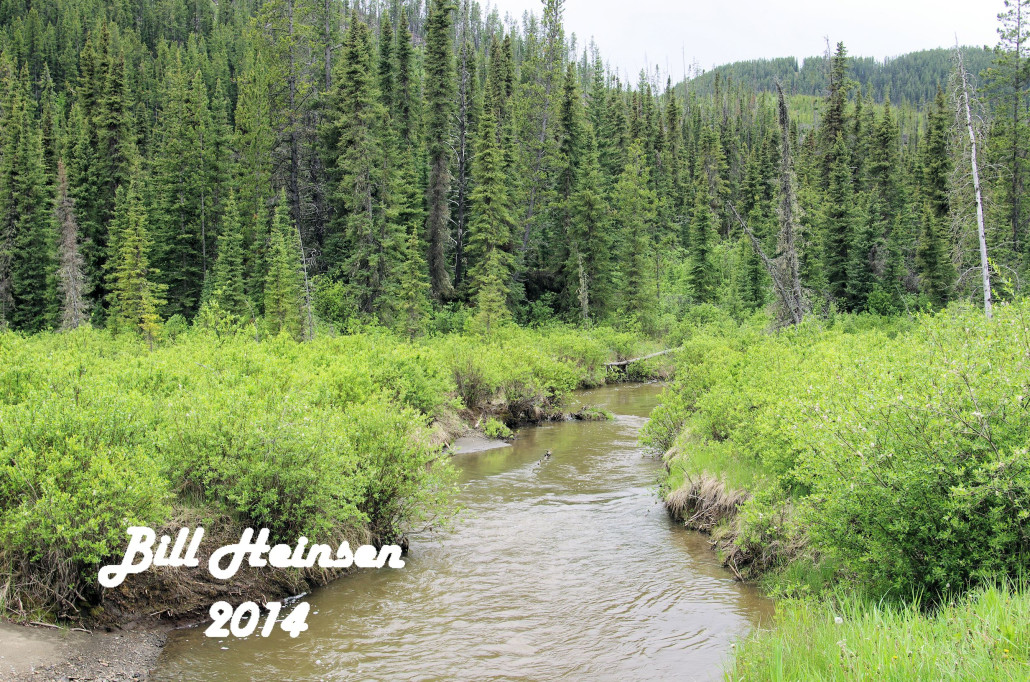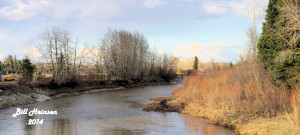Blindman River
Geologically, the Blindman River is old and traverses the farmlands of Central Alberta. Along its banks, near to where it joins the Red Deer River, is a major fossil bed dating from Miocene times. It starts in swampy areas near Rimbey (52°53′13″N 114°34′39″W) and joins the Red Deer River at Burbank, just east of Blackfalds.
Like its sister, the Medicine River, the Blindman River has had a sorry history. Farmers and ranchers still allow cattle to enter the river to drink and little is done to prevent barnyard manure from entering the water. Provincial government policies do little to deter such activities. By midsummer, the phosphates and the nitrates from the cattle cause the bottom of the stream to become stale with algae. Few fish venture into it anymore.
Cliffs along the Blindman River are renowned for their fossil beds. This area contains leaf fossils from about 50 million years ago. The fossils are contained in a matrix of limestone and sandstone. The rocks are fragile making extraction of the fossils very difficult.
Erratics of various sizes are found in the river bed. Grave till is spread just below the surface in much of the valley. All this is debris left at the end of the last continental glacial period. A few kilometres to the southeast of the confluence of the Blindman and Red Deer Rivers are large areas of kames and kettles topography where some cattle are grazed and several gravel pits have been established. That area have been an important breeding area for waterfowl.
Beavers continue to be active in the river. Every autumn, these industrious rodents build dams in the river. During the spring break-up, ice flows invariable remove the dams. During the intervening winter season, riders and snowmobiles and ATV’s careen along the river ice using the dams as obstacles for their pleasure and destructive activities.
Springtime brings a surge of water down the Blindman River as the snow melts. This water quickly drains into the Red Deer River and is of little use to agriculture. Unfortunately, the run-off traverses many barnyards and feedlots, each of which contribute more pollution to this little river. The beaver dams built the previous year stand little chance against the flood surge.


